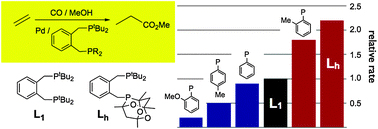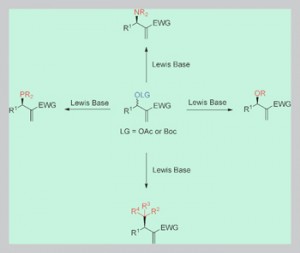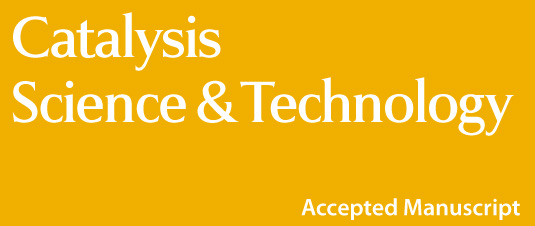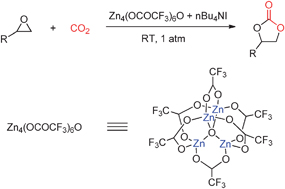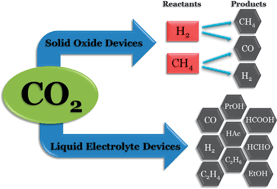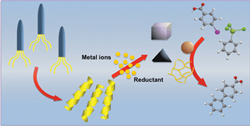This month sees the following articles in Catalysis Science & Technology that are in the top ten most accessed:-
Challenge and progress: palladium-catalyzed sp3 C–H activation
Hu Li, Bi-Jie Li and Zhang-Jie Shi
Catal. Sci. Technol., 2011, 1, 191-206 DOI: 10.1039/C0CY00076K
Metal–organic frameworks as heterogeneous catalysts for oxidation reactions
Amarajothi Dhakshinamoorthy, Mercedes Alvaro and Hermenegildo Garcia
Catal. Sci. Technol., 2011, 1, 856-867 DOI: 10.1039/C1CY00068C
Imidazolium-derived organosilicas for catalytic applications
Amàlia Monge-Marcet, Roser Pleixats, Xavier Cattoën and Michel Wong Chi Man
Catal. Sci. Technol., 2011, 1, 1544-1563 DOI: 10.1039/C1CY00287B
Highly dispersed silica-supported nanocopper as an efficient heterogeneous catalyst: application in the synthesis of 1,2,3-triazoles and thioethers
Pitchaimani Veerakumar, Murugesan Velayudham, Kuang-Lieh Lu and Seenivasan Rajagopal
Catal. Sci. Technol., 2011, 1, 1512-1525 DOI: 10.1039/C1CY00300C
Design of hierarchical zeolite catalysts by desilication
Danny Verboekend and Javier Pérez-Ramírez
Catal. Sci. Technol., 2011, 1, 879-890 DOI: 10.1039/C1CY00150G
Mesoporous TiO2 photocatalytic films on stainless steel for water decontamination
Jia Hong Pan, Zhibin Lei, Wan In Lee, Zhigang Xiong, Qing Wang and X. S. Zhao
Catal. Sci. Technol., 2012, Advance Article DOI: 10.1039/C1CY00171J
High catalytic activity of CuO nanorods for oxidation of cyclohexene to 2-cyclohexene-1-one
Maiyong Zhu and Guowang Diao
Catal. Sci. Technol., 2012, Advance Article DOI: 10.1039/C1CY00274K
Gold-catalyzed oxidation in organic synthesis: a promise kept
Cristina Della Pina and Ermelinda Falletta
Catal. Sci. Technol., 2011, 1, 1564-1571 DOI: 10.1039/C1CY00283J
Morphological impact of manganese–cerium oxides on ethanol oxidation
Huaju Li, Gongshin Qi, Tana, Xiaojing Zhang, Wei Li and Wenjie Shen
Catal. Sci. Technol., 2011, 1, 1677-1682 DOI: 10.1039/C1CY00308A
Asymmetric organocatalytic reactions by bifunctional amine-thioureas
Woon-Yew Siau and Jian Wang
Catal. Sci. Technol., 2011, 1, 1298-1310 DOI: 10.1039/C1CY00271F
Why not take a look at the articles today and blog your thoughts and comments below.
Fancy submitting an article to Catalysis Science & Technology? Then why not submit to us today or alternatively email us your suggestions.











